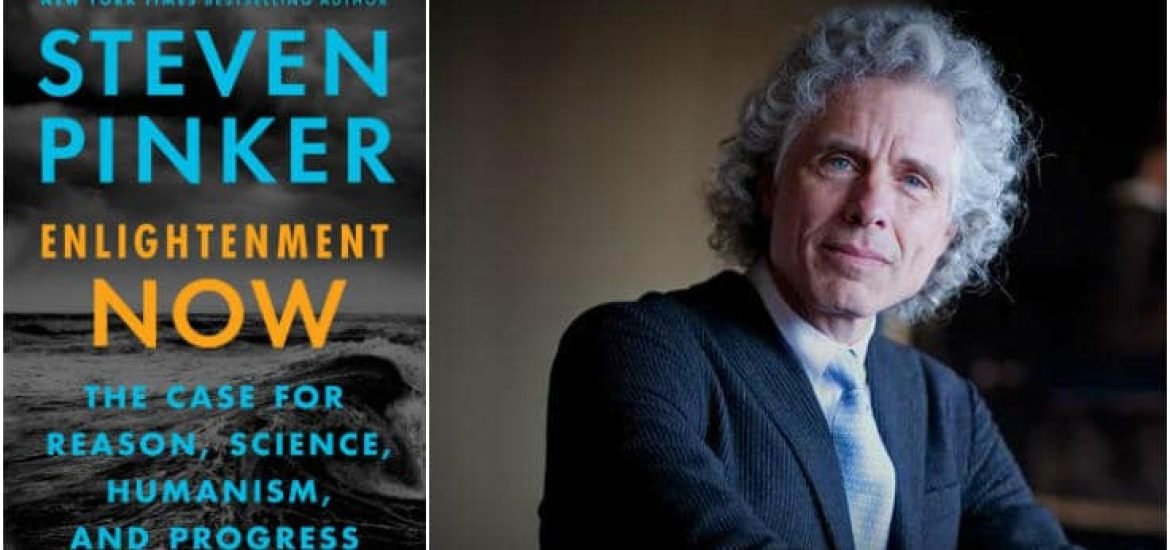
“Enlightenment Now” is the title of the latest book by the Canadian-American Steven Pinker, Johnstone Family Professor in the Department of Psychology at Harvard University, and author of the best-selling “The Better Angels of Our Nature”. This 500-page work, complete with over seventy-five infographics and a copious bibliography, is a real bible for a site like European Scientist. Its principle thesis is that “since the 18th Century and as a result of the philosophy of the Enlightenment, the world – contrary to current popular opinion – has never had it so good, because it has realised the ideals of the Enlightenment, based on knowledge, science and reason.” It is this theory that the author sets out to prove, with supporting statistics. Before going into the work in depth and discussing its claims, which we will do in the second part of this piece, we would like to begin whetting your appetite by giving you just a small handout of the most compelling data supporting the author’s affirmation that we have excellent reasons to continue believing in Reason.
1/ 71.4 years: this was the average life expectancy of an individual in 2015.
We are living longer.
The sources of these figures can be found on the website “Our World in Data ” As this graph shows, life expectancy really only increased from the end of the 19th century, given that in 1800 there was no country with life expectancy above 40 years.

2/ 100 million (more than): the number of children saved from death thanks to the fight against infectious diseases since 1990. We live healthier lives
According to Nicholas Kristof, New York Times columnist, “Since 1990, more than 100 million children have been saved through immunisation, promotion of breastfeeding, treatment of diarrhoea, etc.”[1]
3/ 3100 calories: this is the average food available per person per day for the 1.3 billion population of China.[2]
We are better able to meet our food needs.
Pinker shows that the world is now able to eat its fill, even the least advanced countries. Interesting side note from the author: famines have always been primarily due to political reasons. So of the seventy million people who died of famine in the 20th century, 80% were victims of Communism and its collectivist system.

4/ 10%: this is the percentage of the population still living in extreme poverty in 2015. In 1820, 90% of the population lived in extreme poverty.
Extreme poverty is gradually disappearing from the planet and wealth continues to increase.

5/ .56 : This is the highest point of the International Gini coefficient in the 1970s.
This coefficient makes it possible to measure inequality between countries. After having gone from .16 (not very great inequality) in 1820 to.56 (inequality) in 1970, this coefficient began to stagnate, then to fall, so demonstrating the Kuznets effect: The enrichment of a population generates inequalities, where some people are the first to benefit, but after a while this enrichment ends up benefiting the rest of the population. According to Pinker, this proves that poor people are now getting richer faster than rich people are getting richer[3].
We live in a world that is becoming less and less unequal.

6/ 2/3 : In 2015, the EPA estimated that air pollutant emissions have decreased by 2/3 since 1970.
Interestingly, over the same period the population increased by 40%. These people drove twice as much and became 2.5 times richer.
Science and technology enable us to improve our environment

After having showcased this short extract of positive data we will see in our second part how the author frames his theory and his evidence, and how he avoids the pitfalls.
[1] “Just since 1990, more than 100 million children’s lives have been saved through vaccinations, breast-feeding promotion, diarrhea treatment and more. If just about the worst thing that can happen is for a parent to lose a child, that’s only half as likely today as in 1990. ” Why 2017 may be the best year ever, The New York Times
[2] Adequate calorific intake, according to US government recommendations, for a young working person
[3] ” To confirm that these gains really constitute a decline in inequality – that poor countries are getting richer faster than rich countries are getting richer – we need a single measure that combines them, an international Gini, which treats each country like a person. Figure 9-1 shows that the international Gini rose from a low of .16 in 1820, when all countries were poor, to a high of .56 in 1970, when some were rich, and then, as Kuznets predicted, it plateaued and began to droop in the 1980s. But an international Gini is a bit misleading, because it counts an improvement in the living standards of a billion Chinese as equivalent to an improvement in the standards of, say, four million Panamanians. Figure 9.1 also shows an international Gini calculated by the economist Branko Milanović in which every country counts in proportion to its population, making the human impact of the drop in inequality more apparent” In “Enlightenment Now”, Steven Pinker, p.105
This post is also available in: FR (FR)DE (DE)
Good advertisement for one of the best books (Enlightement Now) published recently, and very useful graphs. Pinker launched important arguments for progress in science and society. Thanks, Klaus